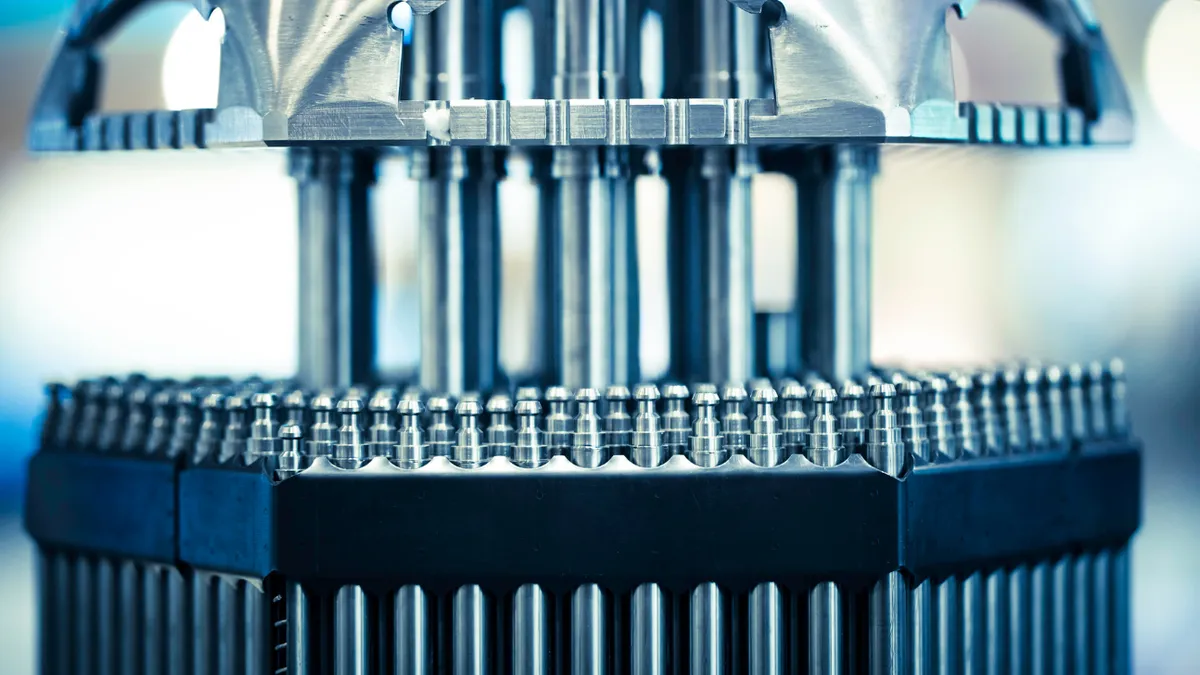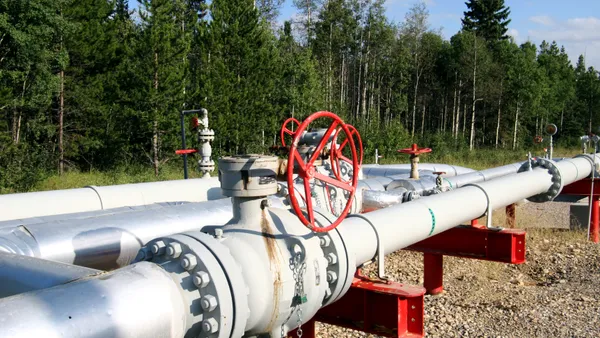Dive Brief:
- NANO Nuclear Energy, a nuclear technology firm, plans to build a fuel fabrication plant at the Idaho National Laboratory in response to greater interest in nuclear energy, rising demand for fuel and to develop a domestic supply unaffected by international events such as Russia’s invasion of Ukraine.
- The fuel fabrication facility is expected to manufacture fuel for nuclear reactors, national laboratories and the U.S. Department of Energy.
- James Walker, CEO and head of nuclear reactor development at NANO Nuclear Energy, said Monday in an interview design work on the $150 million to $200 million project can begin in the next few months and a construction start next year is “feasible.” Approvals are “pretty much complete,” he said.
Dive Insight:
Enough information is available about fuel fabrication that can help expedite the work of the facility, Walker said. It must be able to receive fuel from a licensed enrichment company and have the capacity to store that type of fuel, he said.
Small modular reactors, or SMRs, which are increasingly popular among nuclear developers, will be the company’s biggest customers by the end of the decade, Walker said. NANO Nuclear Energy also hopes to supply fuel to conventional civil reactors, he said.
NANO Nuclear Energy announced in February it formed a subsidiary, HALEU Energy Fuel, to develop, improve and accelerate the domestic production of high-assay low enriched uranium.
Developers, businesses, investors and public policymakers are increasingly active in designing and planning nuclear power plants. The U.S. Nuclear Regulatory Commission in January certified NuScale Power’s small modular reactor design, the first of its type to win federal approval.
Westinghouse Electric announced May 4 its latest nuclear technology, designing and building an SMR that borrows from its nuclear portfolio to speed development and reduce costs.
And Georgia Power announced in April that Unit 3 at its Vogle nuclear plant generated electricity for the first time and successfully synchronized and connected to the electric grid.
“It’s really a wonderful time to be involved in the nuclear space,” Walker said. “There's a lot going on out there.”
Industry and government are looking to develop a more robust domestic supply of nuclear fuel. The U.S. receives about 20% of its enriched uranium from Russia, according to the Nuclear Energy Institute.
Manufacturing nuclear fuel requires mining, conversion, enrichment and fabrication. Many countries mine uranium and Russian uranium is usually not sold directly to U.S. operators, the NEI said. Adequate uranium supply is available from Australia, Canada and the U.S., it said.
However, uranium must be processed before it can be used as fuel and conversion and enrichment services are limited, with Russia a significant supplier.
Fuel fabrication, however, “is 100% American,” the NEI said, referring to the last step in the process of turning uranium into nuclear fuel rods.
Several members of Congress are looking at ways to build a domestic supply of nuclear fuel. Three U.S. senators, including the two leaders of the Senate’s Energy and Natural Resources Committee, introduced bipartisan legislation in February directing the U.S. Department of Energy to establish a nuclear fuel program to strengthen domestic production.
The legislation would make a priority of increasing U.S. production of low-enriched uranium and accelerating efforts to establish a high-assay, low-enriched uranium, or HALEU, capability. Lawmakers want to ensure that a disruption in Russian uranium supply would not affect the development of advanced reactors or operation of the U.S. light-water reactor fleet.
TerraPower told investors in December that domestic and allied manufacturing of HALEU, will not reach commercial capacity in time to meet a proposed 2028 in-service date for Natrium demonstration plant in Wyoming.
Correction: A previous version of this story misstated the expected start of design work for the fuel fabrication facility. Walker said it can begin in the next few months.















